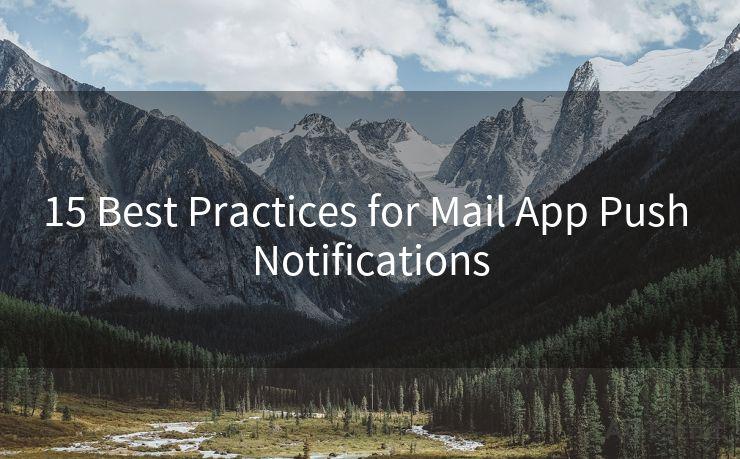15 Best Practices for Mail App Push Notifications




In the digital age, push notifications have become a crucial component of effective communication between apps and users. When it comes to mail applications, these notifications are especially important as they alert users to new emails, keeping them connected and up-to-date. However, not all push notifications are created equal. To ensure your mail app's notifications are both effective and user-friendly, here are 15 best practices to follow:
1. Personalization
Tailor push notifications to the user's preferences. Utilize user data to send relevant and personalized messages, increasing engagement and user satisfaction.
2. Timing
Consider the best time to send notifications. Avoid sending them at inconvenient hours, like the middle of the night, to minimize user disruption.
3. Relevance
Ensure that every notification provides valuable information. Irrelevant or spammy notifications can lead to user dissatisfaction and even app uninstalls.

4. Clear and Concise Messaging
Keep notification messages short, sweet, and to the point. Users should be able to quickly understand the content and urgency of the message.
5. Actionable Content
Include a clear call to action in your notifications, whether it's to read a new email, reply, or perform another task.
6. Frequency Management
Don't flood users with notifications. Strike a balance between keeping them informed and overwhelming them with alerts.
7. User Control
Give users the ability to customize their notification settings. This includes the option to turn off notifications completely or adjust the types of notifications they receive.
8. Priority Levels
Implement priority levels for notifications. High-priority emails, like those from important clients or containing urgent information, should trigger immediate notifications.
9. Visual Appeal
Make your notifications visually appealing with relevant icons, colors, and formatting that align with your app's design language.
10. Deep Linking
Utilize deep linking in notifications to take users directly to the relevant email or section of your app, enhancing user experience and efficiency.
11. Testing and Optimization
Continuously test and optimize your notifications. Gather user feedback, analyze data, and make necessary adjustments to improve performance.
12. Privacy and Security
Respect user privacy. Only send notifications for emails the user has consented to receive and ensure all data is securely handled.
13. Cross-Platform Compatibility
Ensure your notifications work无缝across different devices and operating systems for a consistent user experience.
14. Rich Notifications
Explore rich notification features, like images or interactive elements, to make your notifications more engaging.
15. Follow-Up Actions
Encourage follow-up actions, such as replying to an email or marking it as read, directly from the notification to streamline user workflows.
🔔🔔🔔
【AOTsend Email API】:AOTsend is a Managed Email Service for sending transactional emails. Support Email Types: reminders, authentication, confirmations, notifications, verification codes, invoices, password resets, account activations, billing statements, two-factor authentication (2FA), and one-time passwords (OTP) emails, etc. $0.28 per 1000 Emails. 99% Delivery, 98% Inbox Rate.
You might be interested in:
Why did we start the AOTsend project, Brand Story?
What is a Managed Email API, How it Works?
Best 25+ Email Marketing Platforms (Authority,Keywords&Traffic Comparison)
Best 24+ Email Marketing Service (Price, Pros&Cons Comparison)
Email APIs vs SMTP: How they Works, Any Difference?
By following these 15 best practices for mail app push notifications, you can enhance user engagement, satisfaction, and retention. Remember, effective notifications are not just about delivering information but also about creating a seamless and enjoyable user experience.




Scan the QR code to access on your mobile device.
Copyright notice: This article is published by AotSend. Reproduction requires attribution.
Article Link:https://www.mailwot.com/p5104.html



